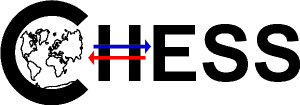When: 29-31 March 2023 (plus an online kick-off meeting on ZOOM)
Where: Geophysical Institute, UiB
Lecturer: Pina Kingman
Max. number of participants: 20
Credits: 1 ECTS
(registration deadline: 19 February 2023)
Course Description:
Do you want to use illustration as an effective communication tool? Learn the essentials of design theory, drawing by hand and drawing digitally during this course.
This course will introduce the theory and method of how to visually represent your scientific research. Being able to translate complex research into information that can be understood by a wide range of audiences is an important skill that will help you throughout your career.
Communicating your work using different methods helps you to think about your work from different perspectives. Not only will this help you understand your own research better, but it will also give you the tools to be able to explain your work to others.
The skills you will learn in this course are highly transferable to any design project you may do in the future, including: graphical abstracts, posters, presentation slides, illustrations for publication, infographics, and outreach material.
Through lectures and workshops, we will cover the following:
● Concept Development: Which addresses how to take complex questions and distill this information into a coherent story, which can then be turned into an illustration.
● Design Theory: Which helps us to understand how to create illustrations that work.
● Sketching: Sketching exercises by hand using pencil and paper.
● Digital Illustration: Beginner course in Adobe Illustrator or another vector illustration software.
● Support and guidance: Through group peer-to-peer review and brainstorming sessions, and through personal reviews by the instructor.
By the end of the course, you will have practiced the theory and methods discussed in class by creating an illustration of your own research. Taking your ideas from conceptualisation to final digital artwork.
Course structure:
There are two parts to the course: 8 hours of pre-course homework and 3 days in-person. The pre-course homework will be provided digitally through the Teachable platform. By following a combination of online tutorials and pre-recorded lectures, you will develop an idea of what to draw, complete a set of preliminary sketches, and have practiced digital illustration techniques. From this foundation we will further develop your illustration in-person, with the support of peer-review and support from the instructor.
Schedule
March 01 : 13:00-13:30 Kick off meeting on Zoom
Lectures and tutorials on Teachable will be available from today. These are self directed with the expectation that you will complete all of them by the time we meet in person. There are two sections:
1) Learn concept development and complete brainstorming sketches by hand. Set aside 5 hours.
2) Learn vector digital illustration through video tutorials. Set aside 3 hours.
March 29-31 : in-person (09:00-16:00 each day)
Day 1 March 29
Learn design theory and finish refined sketches with the help of peer-review. Start tracing sketches with vector based software.
Day 2 March 30
Personal work time to work on digital Illustrations.
Day 3 March 31
Finish and submit final illustration, followed by student presentations.
Requirements from the students:
students can expect about 30 hours time commitment. This includes:
– Scheduled hours to complete the course content (lectures, tutorials, etc)
– Time to complete assignments and exercises
– Personal work time to complete final assignment
– Submissions and presentations
To receive a certificate, students are expected to complete pre-course homework before meeting in person. At the end of the course, students are expected to submit their digital illustration and present their illustrations to the class.
Students will need access to:
● Computer (a laptop if the course is held in-person)
● Mouse
● Headphones (if the course is held in-person)
● Internet access (if the course is held remote)
● Paper and pencil (if the course is held remote)
● Vector illustration software (Adobe Illustrator, ext)
Students are expected to achieve the following:
● Learn and apply design theory
● Learn and practice how to sketch by hand
● Learn and apply digital illustration with Adobe Illustrator or other vector software
● Draw their own research from concept development to final digital illustration
The Instructor`s Biography
Pina Kingman is a biomedical illustrator and animator whose work focuses on telling scientific stories in order to disseminate complex research and promote public awareness of science and medicine. She holds a BSc in Cell Biology and Genetics from the University of British Columbia and a MSc in Biomedical Communication from the University of Toronto.
Since 2016, Pina has held science illustration workshops and courses in partnership with various Norwegian Research Schools that focus on helping research scientists use illustration as a way to communicate their research.
Portfolio: www.pinakingman.com
LinkedIn: https://www.linkedin.com/in/pinakingman/
Contact: courses@pinakingman.com
